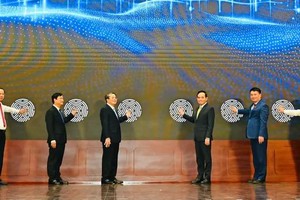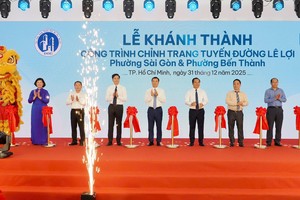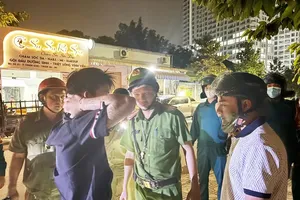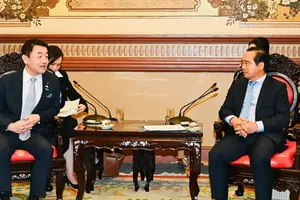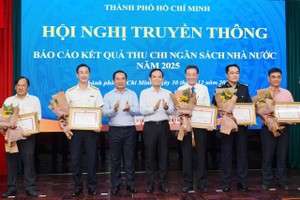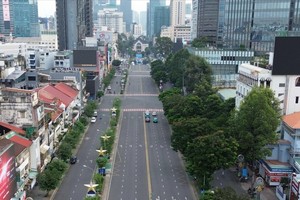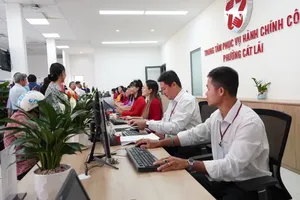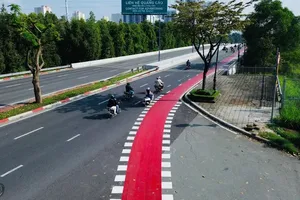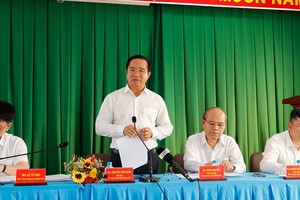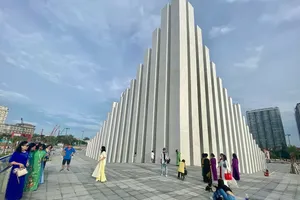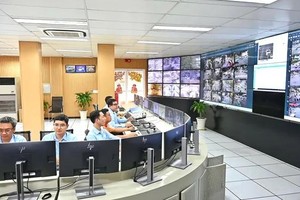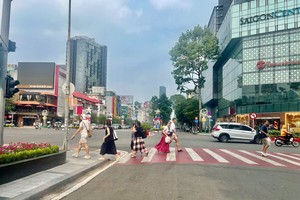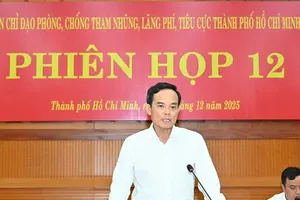( |
Resolution 98 enables HCMC to immediately implement its most pressing and viable road routes (Photo: SGGP) |
Resolution 98 permits investments in upgrading, expanding, and modernizing existing road infrastructure using BOT contracts. Thanks to this policy, the HCMC Department of Transport has chosen the most pressing and viable road routes for immediate implementation.
Focusing on opening up gateways
When carrying out projects utilizing the BOT model, Mr. Tran Quang Lam, Director of the HCMC Department of Transport, explained that with the aim of mitigating the effects of investment dispersion on the social costs borne by residents and businesses, the department has devised a set of criteria for choosing investment projects under BOT contracts for existing roads, comprising five key factors.
The primary criterion pertains to traffic gateways and regional connectivity. The second criterion is traffic congestion, a major concern. The third criterion is the project's feasibility and its potential for capital recovery. The fourth criterion gives priority to projects with minimal State-contributed capital or maximum investor capital involvement. The last criterion concerns their economic and social impact.
"In general, these projects should align with urban planning, correspond to the direction of transportation development, tackle congestion at gateways and vital traffic hubs, and possess the potential to attract investment from the private sector," analyzed Mr. Tran Quang Lam.
Based on this, HCMC has made a list of the most critical and viable road routes for immediate execution. In particular, the National Highway 13 project, stretching from Binh Phuoc Intersection to Binh Trieu Bridge, covering 4.6km, will undergo expansion to a width of 53-60m, necessitating an investment totaling nearly VND10 trillion. The HCMC Department of Transport advocates assigning 50 percent of the State budget and engaging enterprises for the remaining 50 percent.
The next project involves National Highway 1, covering a distance of 9.6km from An Lac to the Long An Province border. This section will be widened from four to eight lanes, requiring a total investment of nearly VND12.9 trillion. The proposal outlines a funding split of 50 percent from the State budget and 50 percent from enterprises.
Following that, the National Highway 22 project, extending 9.1km from An Suong Intersection to Belt Road 3, is set to be expanded to nearly 40m. This undertaking comes with an estimated budget of approximately VND3.61 trillion. The State budget allocation of 67 percent will be used for land clearance, while the remaining 33 percent for construction and installation will be provided by enterprises.
The North-South road project, covering a distance of 7.5km from Nguyen Van Linh Street to the Ba Chiem Bridge interchange, is set for expansion from four to ten lanes. This venture requires a total investment of nearly VND4.5 trillion, with budget distribution consisting of 70 percent from the State and 30 percent from participating enterprises.
As for the Binh Tien Street project, stretching through districts 6, 8, and Binh Chanh, extending 3.2km and featuring a width of 30-40m, the total investment will exceed VND6.2 trillion. The State budget contributes 54 percent for land clearance, and businesses participate with 46 percent for construction.
In addition, Resolution 98 introduces mechanisms for HCMC to undertake BOT projects on key urban and elevated roads.
Land clearance must be on schedule
Having undertaken multiple projects through public-private partnerships in HCMC and various other regions, Mr. Le Quoc Binh, CEO of HCMC Infrastructure Investment JSC (CII), said that the foremost criterion for enticing investor engagement in projects is financial capability. This factor plays a decisive role in determining whether an investor possesses the capacity to successfully execute a project or not.
Another pivotal factor is the city's pledge to provide clean land within the stipulated timeframe, as delays can lead to project extensions, financial strain, and heightened risks for investors. Conversely, given the limited implementation window of only five years, projects executed under Resolution 98 require rapid execution. Therefore, HCMC should further investigate smaller projects with a budget not surpassing VND500 billion, yet holding the urgency and adherence to the established mechanisms. Additionally, it is essential for HCMC to build criteria and responsibilities for all involved parties, thereby ensuring investor confidence.
Regarding the ability to engage in BOT projects, Mr. Bui Van Dan, Deputy Director of IDICO Infrastructure Development Investment JSC, said that the capacity to raise funds and project feasibility are pivotal criteria. These elements decide whether an investor should undertake a project or not. Moreover, investors also demand the city's assurance of adhering to the land clearance timeline. To ensure swift implementation, HCMC should consider implementing a mechanism to add project categories or finalize pending categories in ongoing projects for incomplete projects.
This implies that for ongoing construction projects, businesses continue to execute subsequent phases, such as expanding or finalizing intersections, to ensure the infrastructure's utmost and most efficient utilization. For example, in situations where previous projects (Phase 1) built intersections on level roads, but over time, traffic is increased, leading to traffic congestion. As a result, it becomes crucial to continue to complete grade intersections.
Numerous transportation experts view Resolution 98 as a "magic wand" for propelling HCMC's transportation development forward. Therefore, the city should give precedence to pressing transportation projects aimed at mitigating traffic congestion and shortening travel durations. The Department of Transport should unveil a comprehensive set of criteria for businesses to engage in investments. It is imperative that all these steps be undertaken promptly, initiating the construction of projects that have already attained a reasonable level of readiness in legal, financial, and contractor aspects.
At present, HCMC has 20 PPP contracts, including seven BOT projects, 11 BT projects, one BOO project, and one BOT combined with the BT project, along with one capital contribution contract for investments exceeding VND49 trillion.
HCMC has implemented seven BOT projects, which include Binh Trieu 2 Bridge (Phase 1), where toll collection has concluded, fully recovering the investment; three toll-collecting projects, namely BOT An Suong - An Lac, Phu My Bridge, and the expansion of Hanoi Highway and National Highway 1; The project to connect Nguyen Duy Trinh route to Phu Huu Industrial Park; two projects in the process of contract termination: the connecting road from Vo Van Kiet Street to the HCMC - Trung Luong Expressway and Binh Trieu 2 Bridge (Phase 2).
